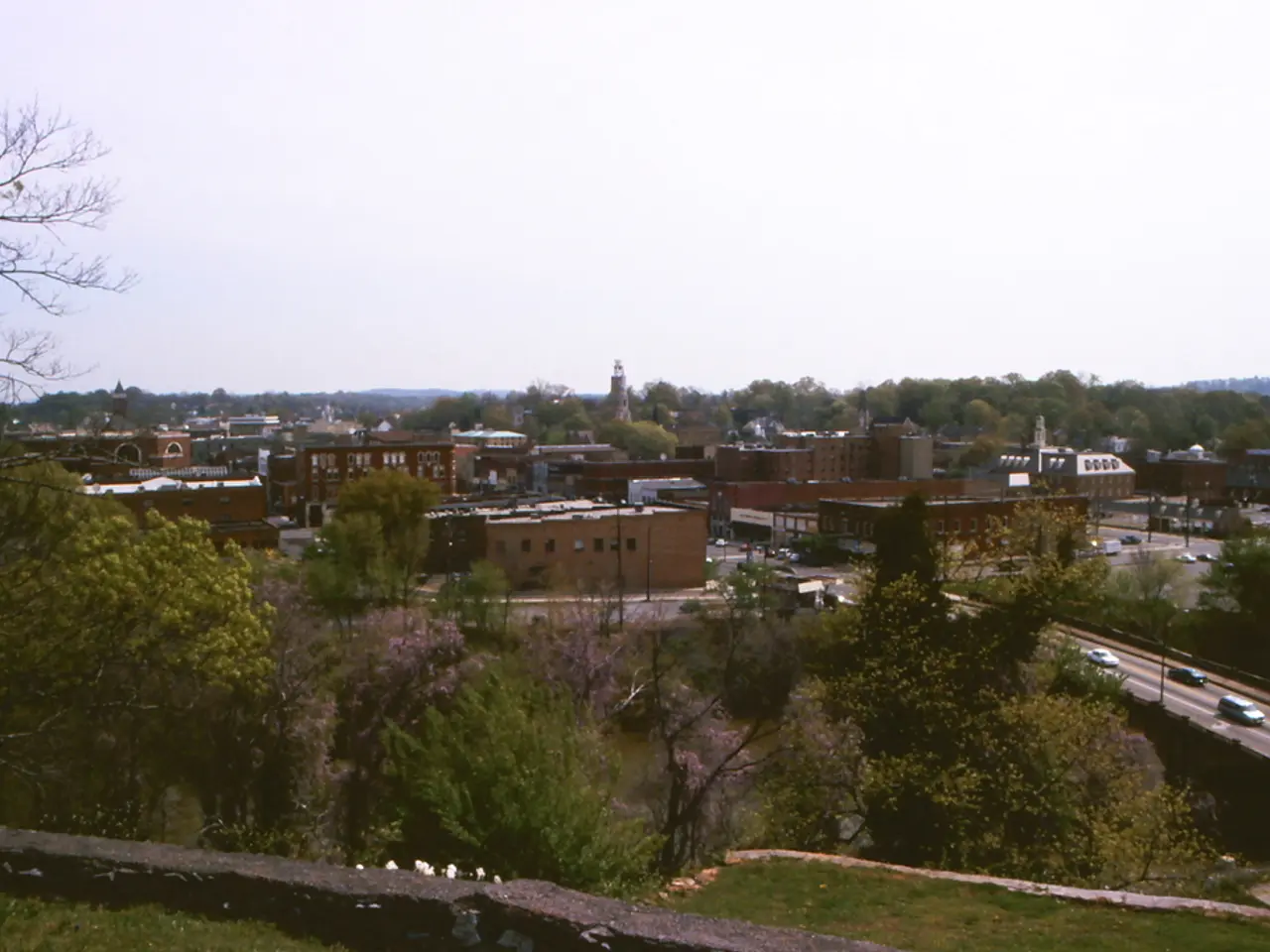City Biodiversity Links: Urban Nature Preservation
In an effort to bridge the gap between nature and urban life, cities around the world are embracing the concept of urban biodiversity corridors. These green pathways serve as vital lifelines for city wildlife, connecting fragmented habitats and offering a plethora of benefits for urban environments.
Collaborative land use planning, zoning regulations, and incentives for developers can help mitigate land use conflicts, paving the way for the creation of these essential corridors. Urban planning is undergoing a transformation, with a focus on bringing nature back into cities, reducing artificial soil, and connecting rural and urban areas.
Policies like zoning laws and green building rules help cities protect habitats, while urban biodiversity corridors themselves offer solutions for climate change adaptation. These corridors, when designed effectively, can help cities adapt to a changing climate and provide vital services.
Effective strategies for designing urban biodiversity corridors include integrating connected green spaces like parks, community gardens, green roofs, and natural reserves to create continuous pathways for wildlife movement. These corridors should mimic natural landscapes, incorporating native vegetation, water sources, and shelter areas to support diverse species. Connecting such habitats enhances migration, breeding, and foraging opportunities, which maintain ecosystem resilience within urban environments.
Innovative structures, such as wildlife bridges and overpasses, are also crucial for overcoming barriers like roads. These structures help reduce animal-vehicle collisions and safely connect fragmented habitats. Additionally, linking natural features such as rivers, wetlands, forests, farms, and urban green belts reinforces landscape connectivity, improving water security, carbon storage, and climate resilience.
Community participation and citizen science are essential components of successful urban biodiversity corridors. Incorporating these elements strengthens long-term conservation success, as local residents monitor and maintain corridors. Furthermore, adopting rewilding and regenerative design principles, such as reintroducing native species, allowing natural ecosystem processes, and reducing impervious surfaces, restores soil and water cycles, creating resilient, climate-adaptive habitats.
Supporting complementary urban sustainability practices, such as resource recycling and pollution reduction within corridors, makes them more self-sustaining ecosystems. Educational campaigns, outreach programs, and volunteer opportunities can increase public awareness and engagement, fostering a sense of ownership and care for urban biodiversity.
Local governments play a crucial role in creating biodiverse cities. They can secure funding from various sources, including government agencies, environmental groups, and partnerships. Biodiversity Action Plans (BAPs) help improve conservation efforts and set targets for success. Public awareness and engagement are key to getting people to care about urban biodiversity, and the community's help is vital for urban biodiversity corridors to thrive.
Examples of successful urban biodiversity corridors include the High Line in New York City and Chicago's Green Alleys. These projects demonstrate the potential for transforming underutilized urban spaces into thriving habitats for both humans and wildlife. Sensors and data can help understand and improve urban nature when combined with biodiversity corridors.
However, challenges remain. Fast urban development and land use conflicts make it hard to plan for the long term. Adapting to urban environments, many species are becoming more prevalent in cities, requiring monitoring programs and public education for successful coexistence.
In summary, urban biodiversity corridors require strategic planning to link multiple green infrastructure elements, the use of innovative structures to overcome barriers, community involvement, and ecological restoration principles to create resilient, climate-adaptive habitats that support wildlife and enhance urban environmental quality. With the right approach, cities can become thriving havens for both people and nature.
- Urban planning is shifting towards integrating nature back into cities, aiming to reduce artificial soil and connect rural and urban areas.
- Policies such as zoning laws and green building rules help cities protect habitats, while urban biodiversity corridors offer solutions for climate change adaptation.
- Effective strategies for designing urban biodiversity corridors include creating continuous pathways for wildlife movement, mimicking natural landscapes, and incorporating native vegetation, water sources, and shelter areas.
- Innovative structures like wildlife bridges and overpasses help reduce animal-vehicle collisions and safely connect fragmented habitats.
- Committing to complementary urban sustainability practices, such as resource recycling and pollution reduction, makes urban biodiversity corridors more self-sustaining ecosystems.
- Supporting educational campaigns, outreach programs, and volunteer opportunities fosters a sense of ownership and care for urban biodiversity.
- Adapting to urban environments, many species are becoming more prevalent in cities, necessitating monitoring programs and public education for successful coexistence.
- Local governments secure funding and set targets for success through Biodiversity Action Plans (BAPs), playing a crucial role in creating biodiverse cities that thrive, benefiting both humans and wildlife.




